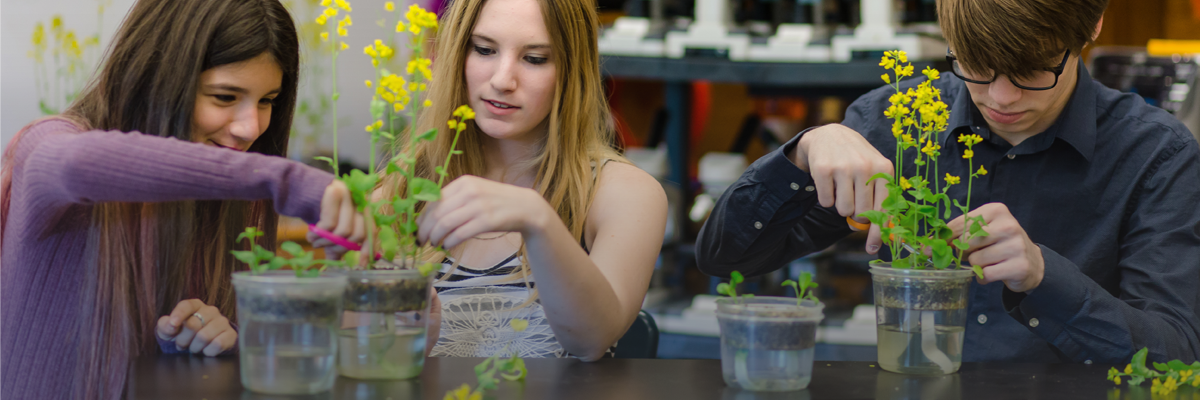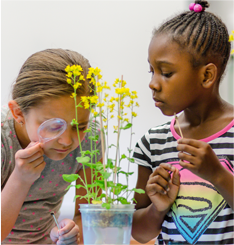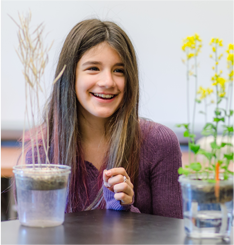-

Everything you need to know about growing fast plants.
-

Seed Varieties
Find the seed type that is best suited for your learning opportunity.
-

Lessons & Investigations
Classroom activities and guides for helping you plan your lessons.
-

Origin of Fast Plants
Learn about the history and creation of fast plants.
The Life Cycle of Fast Plants®
The life cycle for Fast Plants is extremely short; under ideal growing conditions of continuous light, water and nutrition, plants will produce harvestable seeds approximately 40 days after planting.
Lessons & Investigations
Find learning materials and classroom activities to use for all ages.
CTE: Plant Systems Career Pathway cultivates success with Fast Plants!
Future Depends on Plant Systems careers In the ever-evolving landscape of agriculture and plant sciences, the need for hands-on experiences growing plants has never been more critical. Career Technical Education (CTE) courses in the Plant Systems Pathway are foundational for future professionals in a wide variety of plant science fields, and one valuable addition that stands out is the incorporation ...
Read MoreFast Plants Conferences 2023 NABT CAST ACTE Booth Resources
It’s the season of professional development conferences for teachers, educators, and our Fast Plants Team! Come visit our booths in the exhibit halls, they’re always packed with living Fast Plants, recommended resources, and good conversation. Jackson is attending NABT in Baltimore; Hedi and Dan are attending CAST in Houston and ACTE in Phoenix! This blog post summarizes what you’ll find ...
Read MoreTeach Inheritance with Fast Plants – Where to start?
Are you just deciding where to start to teach inheritance patterns with Fast Plants? Or maybe you’ve used Fast Plants before and are ready to add complexity to your inheritance investigations. Because we have so many resources available, choosing where to start can be a bit daunting. So, in this post we guide you through the decision making process and link to ...
Read More








